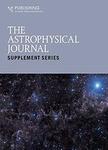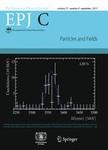版权所有:内蒙古大学图书馆 技术提供:维普资讯• 智图
内蒙古自治区呼和浩特市赛罕区大学西街235号 邮编: 010021
T=题名(书名、题名),A=作者(责任者),K=主题词,P=出版物名称,PU=出版社名称,O=机构(作者单位、学位授予单位、专利申请人),L=中图分类号,C=学科分类号,U=全部字段,Y=年(出版发行年、学位年度、标准发布年)
AND代表“并且”;OR代表“或者”;NOT代表“不包含”;(注意必须大写,运算符两边需空一格)
范例一:(K=图书馆学 OR K=情报学) AND A=范并思 AND Y=1982-2016
范例二:P=计算机应用与软件 AND (U=C++ OR U=Basic) NOT K=Visual AND Y=2011-2016

The Vera C. Rubin Observatory is due to commence the 10 yr Legacy Survey of Space and Time (LSST) at the end of 2025. To detect transient/variable sources and identify solar system objects (SSOs), the processing pipelines require templates of the static sky to perform difference imaging. During the first year of the LSST, templates must be generated as the survey progresses; otherwise, SSOs cannot be discovered nightly. The incremental template generation strategy has not been finalized; therefore, we use the Metric Analysis Framework (MAF) and a simulation of the survey cadence (one_snap_v4.0_10yrs) to explore template generation in Year 1. We have assessed the effects of generating templates over timescales of days–weeks, when at least four images of sufficient quality are available for ≥90% of the visit. We predict that SSO discoveries will begin ∼2–3 months after the start of the survey. We find that the ability of the LSST to discover SSOs in real time is reduced in Year 1. This is especially true for detections in areas of the sky that receive fewer visits, such as the North Ecliptic Spur (NES), and in less commonly used filters, such as the u and g bands. The lack of templates in the NES dominates the loss of real-time SSO discoveries; across the whole sky the MAF main-belt asteroid (MBA) discovery metric decreases by up to 63% compared to the baseline observing strategy, whereas the metric decreases by up to 79% for MBAs in the NES alone.

电话和邮箱必须正确填写,我们会与您联系确认。
版权所有:内蒙古大学图书馆 技术提供:维普资讯• 智图
内蒙古自治区呼和浩特市赛罕区大学西街235号 邮编: 010021

暂无评论